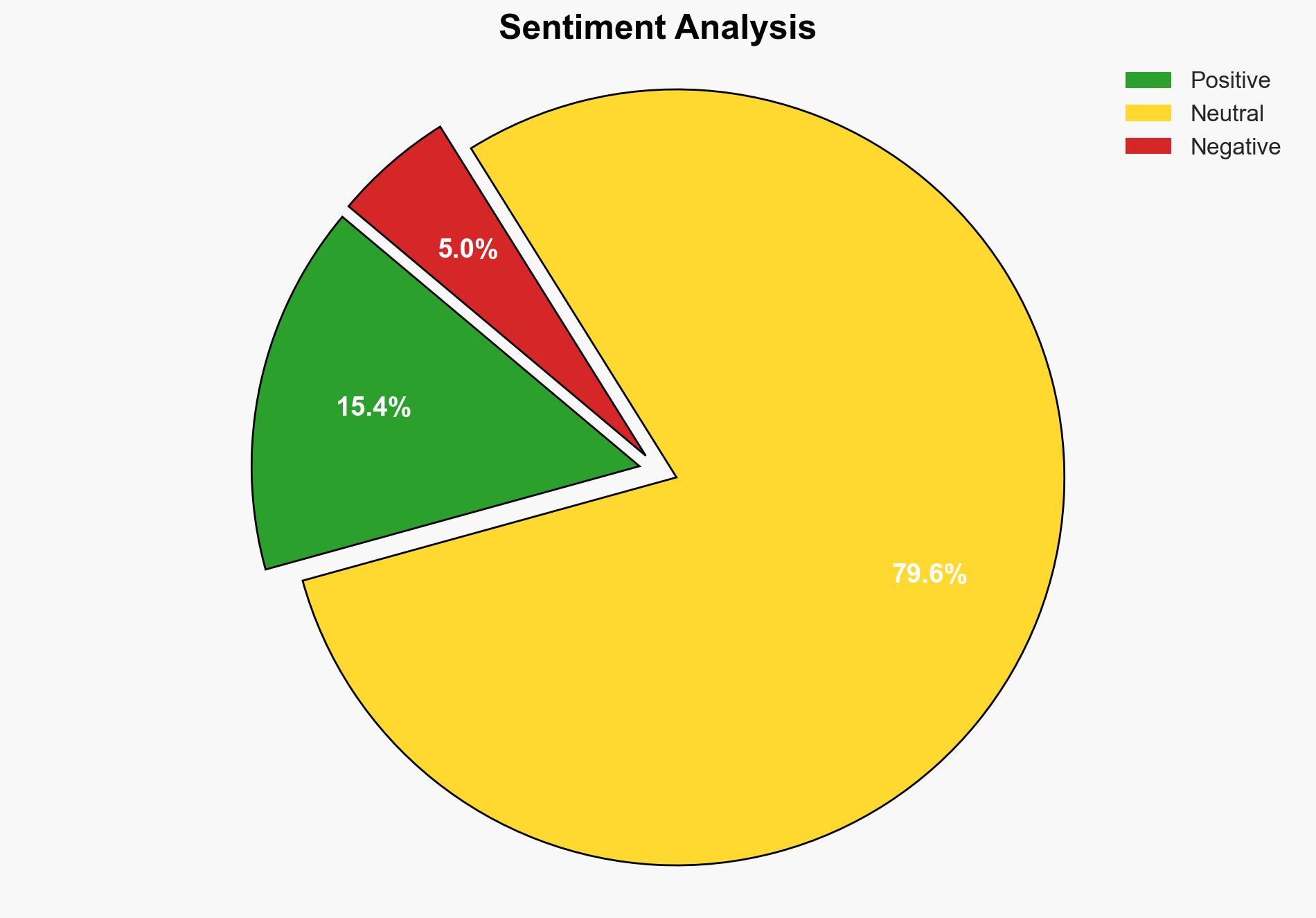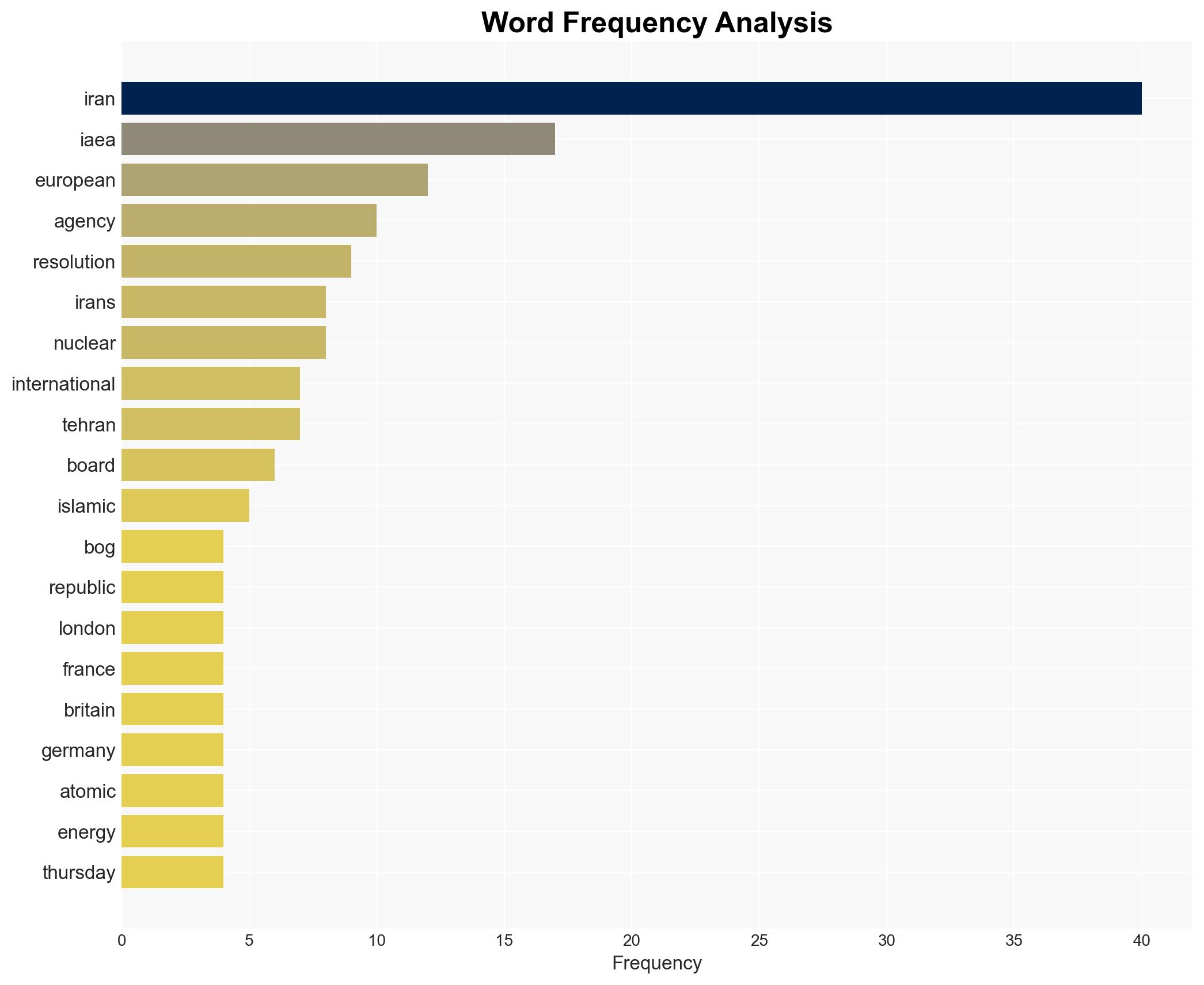West insists on politicizing Iran’s nuclear issue Anti-Iran resolution adopted at IAEA BoG – Globalsecurity.org
Published on: 2025-11-21
AI-powered OSINT brief from verified open sources. Automated NLP signal extraction with human verification. See our Methodology and Why WorldWideWatchers.
Intelligence Report:
1. BLUF (Bottom Line Up Front)
With a moderate confidence level, the most supported hypothesis is that the adoption of the anti-Iran resolution by the IAEA Board of Governors (BoG) is primarily a strategic maneuver by Western powers to maintain pressure on Iran regarding its nuclear program. This action is likely to exacerbate tensions between Iran and the West, potentially undermining diplomatic efforts. Recommended action includes advocating for renewed diplomatic engagement to prevent escalation and maintain regional stability.
2. Competing Hypotheses
Hypothesis 1: The resolution is a strategic move by Western powers to apply pressure on Iran to ensure compliance with international nuclear agreements and prevent potential military dimensions (PMD) of its nuclear program.
Hypothesis 2: The resolution is primarily a political tool used by Western countries to isolate Iran and align international opinion against it, regardless of Iran’s actual compliance with nuclear agreements.
Hypothesis 1 is more likely due to the consistent emphasis on compliance with the Nuclear Non-Proliferation Treaty (NPT) and the IAEA’s role in monitoring nuclear activities. The involvement of the European Troika, known for diplomatic efforts, supports the notion of strategic pressure rather than mere political isolation.
3. Key Assumptions and Red Flags
Assumptions: It is assumed that the IAEA’s reports are accurate and unbiased, and that Iran’s nuclear activities have potential military dimensions.
Red Flags: The joint statement by China, Russia, and Iran opposing the resolution suggests potential bias or political motivations behind the resolution. The possibility of misinterpretation or selective reporting by involved parties is a concern.
Deception Indicators: Iran’s warning of a “firm response” and its claim of illegal actions by European countries could indicate an attempt to deflect attention from non-compliance issues.
4. Implications and Strategic Risks
The resolution could lead to increased political tensions between Iran and Western countries, potentially escalating into economic sanctions or cyber confrontations. The undermining of diplomatic channels may also result in regional instability, affecting global energy markets and increasing the risk of military confrontations.
5. Recommendations and Outlook
- Encourage diplomatic engagement between Iran and Western powers to address compliance issues and prevent escalation.
- Monitor regional alliances and prepare for potential shifts in geopolitical dynamics.
- Best Scenario: Renewed diplomatic talks lead to a resolution of compliance issues and stabilization of relations.
- Worst Scenario: Escalation leads to military conflict, disrupting regional stability and global energy supplies.
- Most-likely Scenario: Continued diplomatic tension with intermittent negotiations and sanctions.
6. Key Individuals and Entities
Rafael Grossi (IAEA Director General), Reza Najafi (Iran’s Ambassador, Permanent Representative in Vienna), Kazem Gharibabadi (Deputy Foreign Minister for Legal and International Affairs).
7. Thematic Tags
Regional Focus, Middle East, Nuclear Non-Proliferation, International Relations, Diplomatic Tensions
Structured Analytic Techniques Applied
- Causal Layered Analysis (CLA): Analyze events across surface happenings, systems, worldviews, and myths.
- Cross-Impact Simulation: Model ripple effects across neighboring states, conflicts, or economic dependencies.
- Scenario Generation: Explore divergent futures under varying assumptions to identify plausible paths.
Explore more:
Regional Focus Briefs ·
Daily Summary ·
Support us





